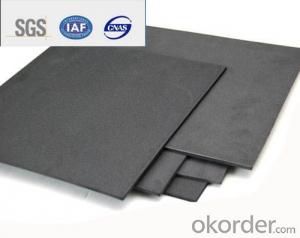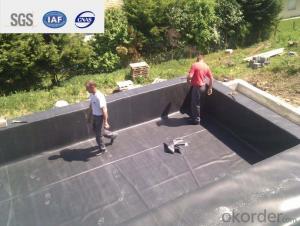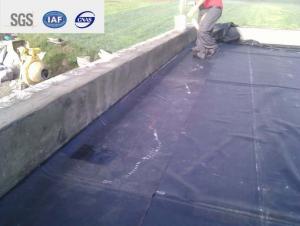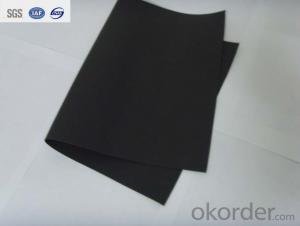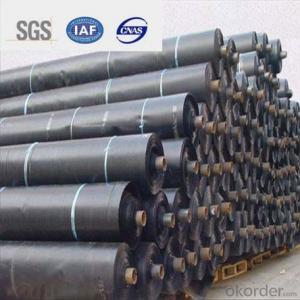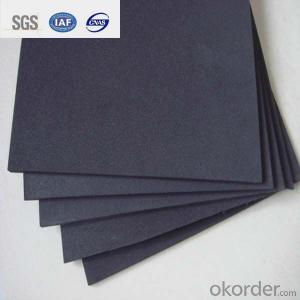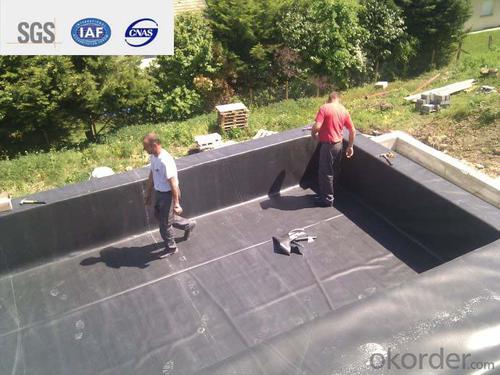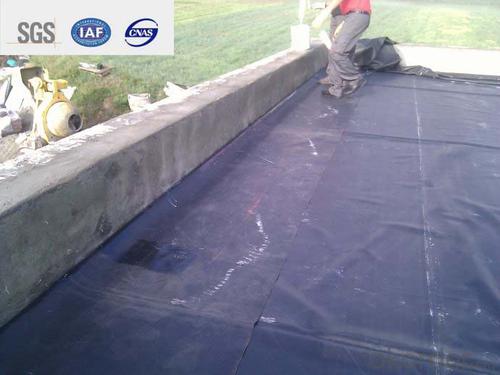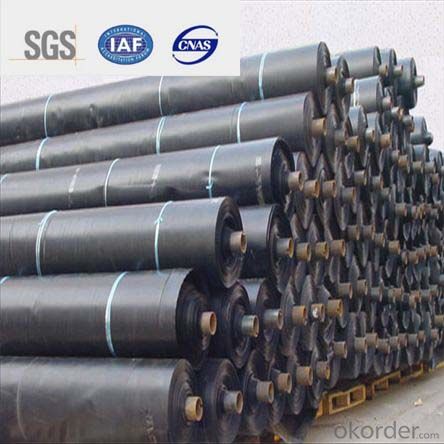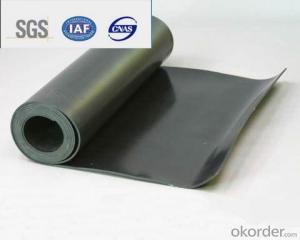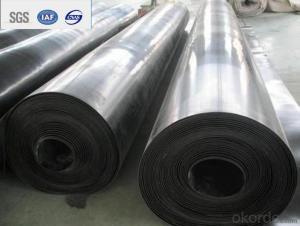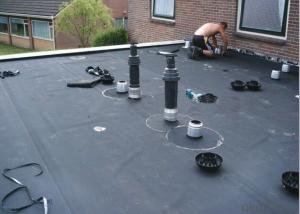EPDM Waterproofing Roofing Membrane for Roof 1.2mm
- Loading Port:
- Qingdao
- Payment Terms:
- TT OR LC
- Min Order Qty:
- 2000 m²
- Supply Capability:
- 800000 m²/month
OKorder Service Pledge
OKorder Financial Service
You Might Also Like
Description Of EPDM Rubber Waterproof Membrane:
1. EPDM waterproof membrane is made from ternary ethylene-propylene rubber, which is for waterproofing of exposed and non-exposed applications.
2. EPDM waterproof membrane production adopts the world-advanced equipment of cold feeding extrusion and continuous vulcanization technology.
3. EPDM waterproof membrane is of high elasticity among high polymer waterproof materials and becomes a world-popular waterproofing material.
Main Features of EPDM Rubber Waterproof Membrane:
1. Excellent physical and mechanical performance
2. High tearing resistance
3. Good deformation adaptability
4. High puncture resistance
5. High aging resistance
6. UV resistance
Specifications of EPDM Rubber Waterproof Membrane:
Material | EPDM Rubber |
Size | 1.2m (width)*20m (length) or customized, weldable type 2.05m or 4m width |
Thick | 1.2mm, 1.5mm, 2.0mm |
Type | Vulcanized & Weldable |
Pattern | Non-reinforced (homogeneous) |
Certificate | ISO9001/14001 |
Applications of EPDM Rubber Waterproof Membrane:
1.Roofs, Basement, Toilets
2. Industrial and civil building waterproofing
3. Geosynthetic liner for swimming pool, channels, irrigation system
4. Especially suitable for projects with high requirements in durability, anti-corrosion and deformation.
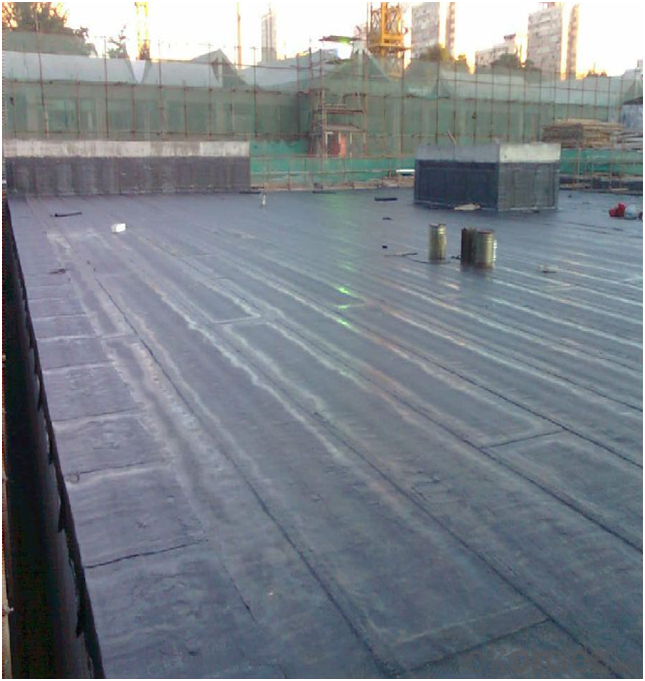
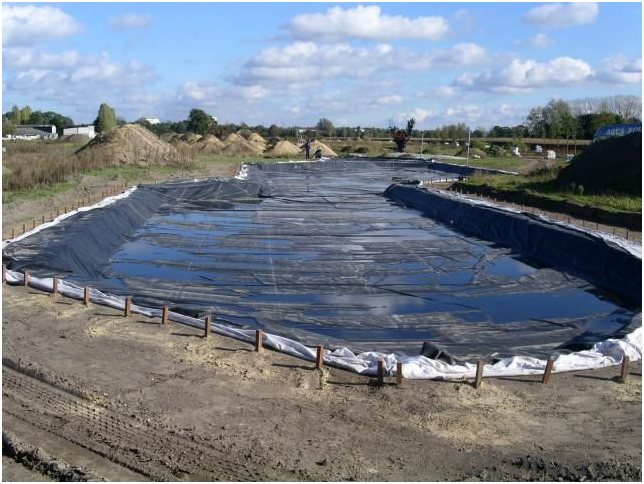
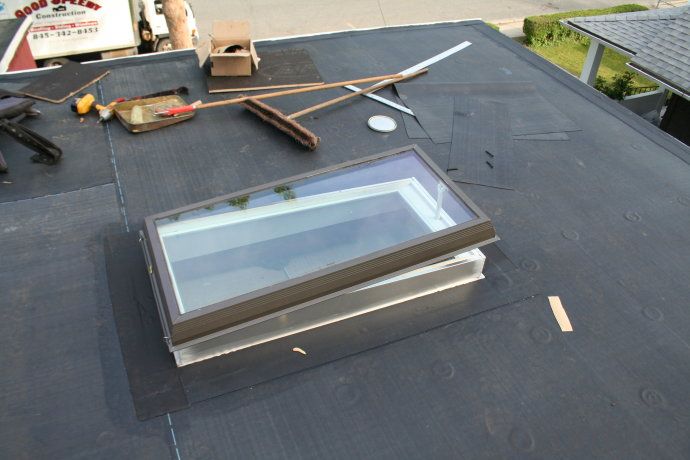
FAQ:
1. What are we supplying?
We are specialized in producing Colorful Asphalt Roof Shingle, SBS/APP modified bitumen waterproof membrane, Self adhesive bitumen waterproof membrane, PVC waterproofing membrane, EPDM rubber roofing membrane, Single Component Polyurethane Waterproof Coating, and Spray Polyurea Waterproof Coating.
2. How Many years experience do we have?
We have been exported to more than 20 countries in the past 15 years.
3. How long do we usually reply your request?
We always reply our customer within 24 hours.
- Q: Can a waterproofing membrane be used for theaters or concert halls?
- Theaters and concert halls can benefit greatly from the use of waterproofing membranes. These membranes are commonly employed in construction projects to safeguard buildings against water damage by preventing water infiltration. They are applied to various surfaces, including walls, floors, and roofs, creating a barrier that stops water from seeping through. In the case of theaters and concert halls, where the protection of the building structure and equipment is of utmost importance, waterproofing membranes can be extremely advantageous. They play a crucial role in preventing water damage to delicate equipment like audiovisual systems, lighting fixtures, and musical instruments. Furthermore, these membranes ensure a dry and comfortable environment for both performers and audience members by preventing water leakage and moisture buildup. In conclusion, the use of a waterproofing membrane in theaters or concert halls guarantees the longevity and functionality of the building, creating a safe and enjoyable experience for all involved.
- Q: Can a waterproofing membrane be used for exterior foundation walls?
- Exterior foundation walls can indeed benefit from the application of a waterproofing membrane. These membranes serve as a defense against water infiltration and are widely utilized in construction to safeguard below-grade structures, like foundation walls, from moisture intrusion. Crafted from robust materials such as rubber, asphalt, or polymer-based compounds that resist water penetration, these membranes form an impermeable shield. Placing a waterproofing membrane on the outside of foundation walls effectively establishes a barrier that thwarts water from seeping into the foundation. This preventive measure aids in averting problems such as water damage, mold growth, and structural decay. Moreover, the utilization of waterproofing membranes also diminishes the risk of cracks and leaks in the foundation, thereby improving the overall resilience and longevity of the structure.
- Q: Can waterproofing membranes be used on concrete pools?
- Yes, waterproofing membranes can be used on concrete pools. These membranes are designed to prevent water from penetrating the concrete and causing damage. They create a barrier that keeps the water inside the pool, ensuring its structural integrity and preventing any leaks or seepage.
- Q: Can a waterproofing membrane be used for sealing pipe penetrations?
- Yes, a waterproofing membrane can be used for sealing pipe penetrations. Waterproofing membranes are designed to create a barrier against water and moisture, making them suitable for sealing pipe penetrations to prevent water leakage or intrusion.
- Q: Can a waterproofing membrane be used on roofs with rooftop gardens?
- Indeed, rooftops with gardens can benefit greatly from the utilization of a waterproofing membrane. Employing a waterproofing membrane is strongly advised as it shields the foundational framework from harm caused by water. Given that a rooftop garden contributes additional weight and moisture to the roof, it is imperative to have a reliable waterproofing system in place to avert leaks and guarantee the roof's durability. The waterproofing membrane serves as a safeguard against water infiltration, effectively maintaining dry conditions for both the rooftop garden and the underlying structure.
- Q: Can a waterproofing membrane be used for a water tank liner?
- Yes, a waterproofing membrane can be used for a water tank liner. Waterproofing membranes are specifically designed to prevent water penetration and can be applied to a variety of surfaces, including concrete, metal, and other materials commonly used in water tank construction. These membranes create a barrier that prevents leaks, cracks, and other forms of water damage, ensuring the integrity and longevity of the water tank. Additionally, waterproofing membranes are typically flexible, allowing them to conform to the shape of the tank and accommodate any movement or settlement that may occur. It is important, however, to select a waterproofing membrane that is specifically designed for water tank applications to ensure optimal performance and durability.
- Q: Is a waterproofing membrane effective at preventing water leaks?
- Yes, a waterproofing membrane is highly effective at preventing water leaks. A waterproofing membrane is a thin layer of material that is applied to surfaces such as roofs, walls, or foundations to create a barrier against water penetration. This membrane acts as a protective shield, preventing water from seeping through and causing leaks. It is designed to be highly resistant to water, ensuring that it remains intact even in the presence of heavy rainfall or moisture. Additionally, waterproofing membranes are flexible, allowing them to adapt to the movement of the underlying structure without compromising their effectiveness. Whether used in construction, plumbing, or even in everyday products like shower curtains, a waterproofing membrane plays a crucial role in preventing water leaks and maintaining a dry and safe environment.
- Q: Can a waterproofing membrane be used for airport runways?
- Airport runways, when faced with heavy aircraft traffic, weather conditions, and potential fuel spills, undergo significant wear and tear. To combat this, a waterproofing membrane can be utilized. This membrane acts as a protective shield, preventing water infiltration and subsequent runway deterioration. Moreover, it acts as a barrier against fuel, oil, and other chemicals that can weaken the runway structure. By reducing the impact of freeze-thaw cycles and obstructing the formation of cracks and potholes, a waterproofing membrane effectively prolongs the runway's lifespan. Ultimately, incorporating a waterproofing membrane enhances the durability and safety of airport runways, ensuring seamless operations and minimal maintenance expenses.
- Q: Can waterproofing membranes be used in wet areas like bathrooms?
- Yes, waterproofing membranes can be used in wet areas like bathrooms. These membranes are specifically designed to create a barrier against moisture and prevent water from seeping into the underlying surfaces. Applying waterproofing membranes in bathrooms is a common practice to protect the structural integrity of the space and prevent any water damage.
- Q: Can waterproofing membranes be used on concrete block walls?
- Concrete block walls can indeed benefit from the use of waterproofing membranes. It is actually quite common and highly advised to employ such membranes on concrete block walls in order to ward off water infiltration and potential moisture-related harm. These membranes are specifically engineered to establish a barrier against water and can be effectively applied to either the exterior or interior surface of the concrete block walls. In doing so, they furnish an added layer of safeguarding, thereby preventing moisture from penetrating the walls and causing issues such as the growth of mold, efflorescence, and the deterioration of the concrete blocks themselves. By opting for the utilization of waterproofing membranes, you can effectively ensure the long-lasting resilience and durability of your concrete block walls.
Send your message to us
EPDM Waterproofing Roofing Membrane for Roof 1.2mm
- Loading Port:
- Qingdao
- Payment Terms:
- TT OR LC
- Min Order Qty:
- 2000 m²
- Supply Capability:
- 800000 m²/month
OKorder Service Pledge
OKorder Financial Service
Similar products
Hot products
Hot Searches
Related keywords
